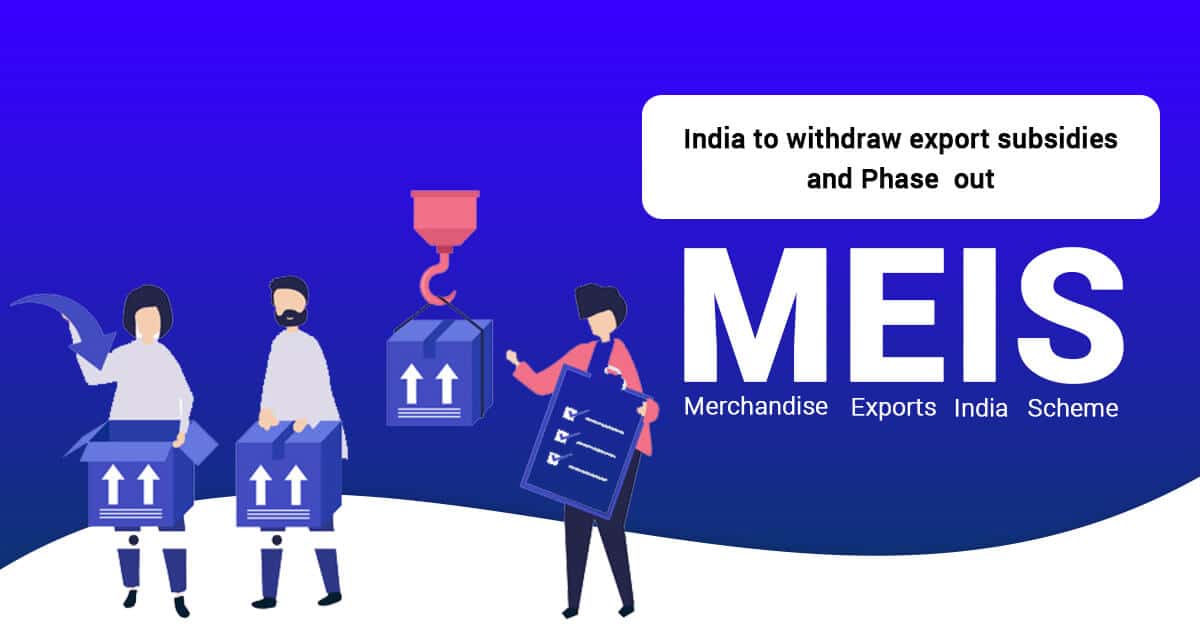
To phase out the flagship Merchandise Exports from India Scheme (MEIS). The commerce ministry has circulated a Cabinet note and move to a more WTO – Compatible regime, as countries like the US have challenged India’s export “subsidy” programs. The scheme will be monitored by the Ministry of Commerce and Finance[1] (Department of revenue).
As reported by FE, Exporters will be refunded levies that are not reimbursed through freely transferable scrips. Further, the new scheme will refund both state and central levies on inputs consumed in exports and various sectors will be covered in phases. The rate of scrips for various products will fix by the duty drawback panel under the finance ministry. The main motive behind the scheme is-
Two schemes were introduced in Foreign Trade Policy of India 2015-20under Foreign Trade Policy of India (FTP 2015-20), as a part of Exports from India Scheme. They are-
MEIS scheme provides an incentive in the form of duty credit scrip to the exporter to compensate for his loss on payment of duties with the only aim in making India’s products more competitive in the global markets. The countries have been segregated into three groups to determine the quantity of incentive. Additionally, Incentives on export depend on the group in which its destination country belongs which is represented by the 8-digit level (ITC HS codes).
The countries are essentially segregated into 3 groups mentioned below
Under MEIS scrips, the incentives are awarded to exporters in the form of Duty Credit Scrips which are freely transferable can be easily sold to anyone and can be used for the payment of customs duty.
Cabinet note was issued by the Commerce Ministry to discontinue the MEIS (Merchandise Exports from India Scheme) because countries like the United States challenged India’s export “subsidy” programs and challenged India’s eligibility to extend export subsidies at the WTO (World Trade Organization).
The motive was to recast the export incentives which as a result could be a part of the new Import-Export Policy as the current policy will expire in 2020.
Further, the move to phase MEIS will lead to a major disaster and kill the industry because the industry operates at a very low margin and Withdrawal of the incentive by phasing out the MEIS will turn the margin negative. For the growth of the industry, it is of utmost importance to come out with an alternative policy that extends benefits equivalent of MEIS compatible with WTO rules for the growth of the industry. It is important to provide infrastructure facilities apart from contracting free trade agreements with the EU, the United Kingdom, Australia, Canada.
Also, Read: Section 194N – A Complete Overview of Newly Introduced Section.
On January 16, 2025, the Reserve Bank of India (RBI) released the list of Non-Banking Financial...
Over the decades, the Oil and Natural Gas Corporation (ONGC) has been a key pillar in the portf...
The Reserve Bank of India, on April 11, 2025, posted a Press Release No. 2025-2026/96 on their...
Hong Kong is widely recognized as a leading global business hub, known for its free-market econ...
With India’s growing economy, Non-Banking Financial Companies (NBFCs) have expanded significa...